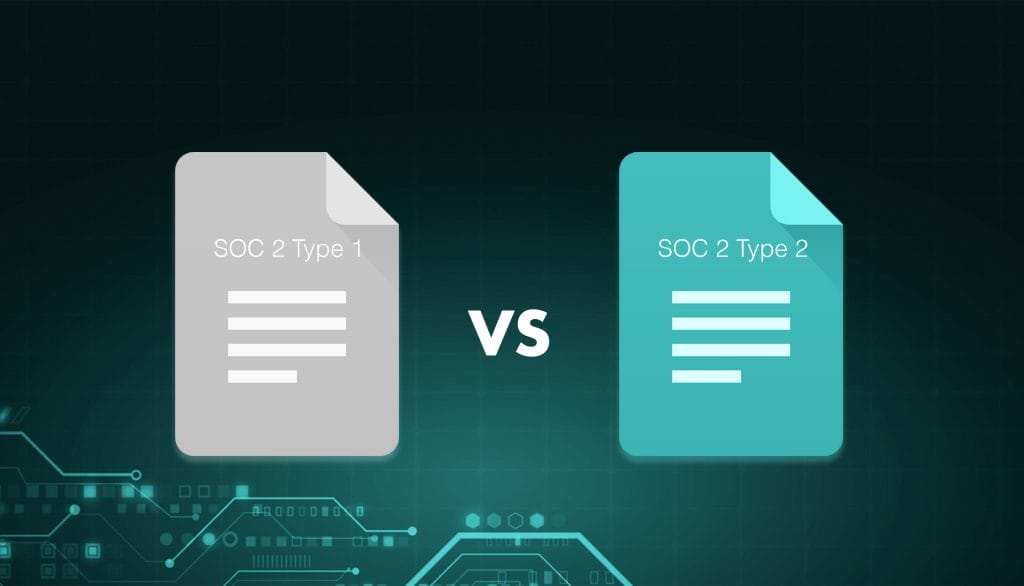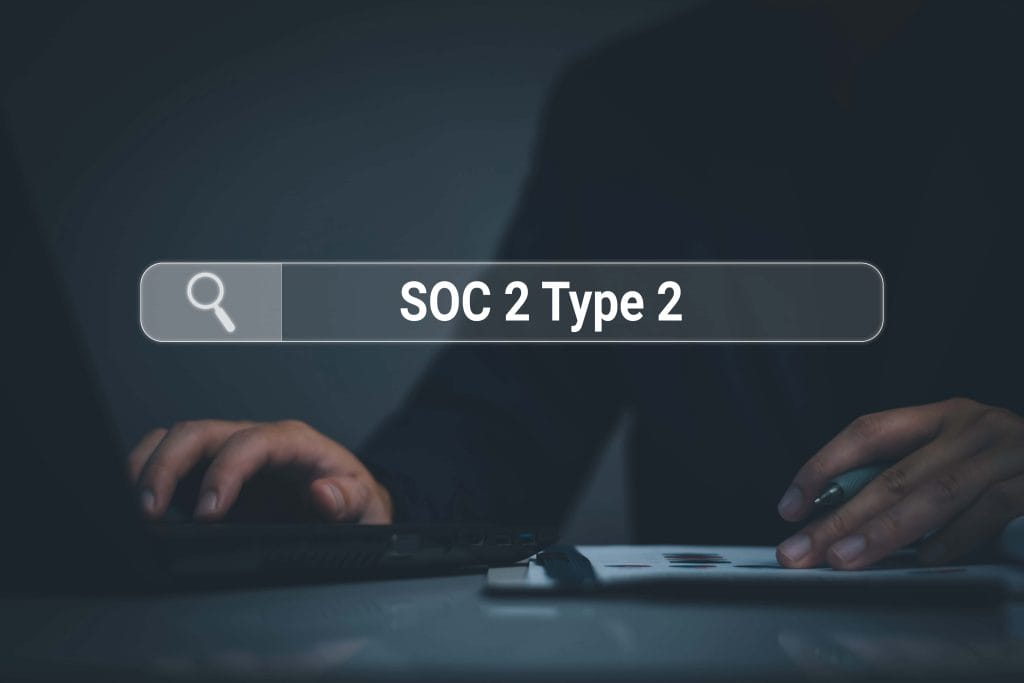
As you assess your company’s IT support infrastructure, examining protocols and scrutinizing standards becomes imperative.
In the realm of IT services, SOC 2 Type 1 and Type 2 audits emerge as crucial benchmarks, affirming your organization’s commitment to safeguarding customer information.
Type 1 serves as an evaluation of your systems at a specific moment, ensuring that your IT support controls are appropriately designed.
On the flip side, Type 2 takes it a step further, scrutinizing the operational effectiveness of those controls over a designated period.
Your decision between these audits can significantly impact your business’s reputation and compliance posture within the IT services landscape.
Within this comprehensive guide, delve into the intricacies of each type, empowering you to determine which audit aligns seamlessly with your company’s IT services strategy and showcases your unwavering dedication to data integrity.
Understanding SOC 2 Audits
To understand SOC 2 audits, you’ll need to grasp that they’re designed to evaluate and report on the effectiveness of your company’s system controls related to security, availability, processing integrity, confidentiality, and privacy. These audits are critical in today’s digital landscape, where trust is paramount for businesses handling sensitive information.
SOC 2 audits aren’t a one-size-fits-all; they’re tailored to your company’s specific practices and the services it provides. By adhering to the Trust Services Criteria, these audits ensure that your internal controls are up to the task of protecting client data according to the highest standards. It’s not just about having controls in place; it’s about proving their operating effectiveness over the audit period, which is crucial for building confidence among your clients and partners.
You’ll find there are two types of SOC 2 audits—Type 1 and Type 2. Type 1 focuses on the suitability of the design of controls at a specific point in time. On the other hand, Type 2 examines the operational effectiveness of these controls over a defined audit period, typically ranging from six to twelve months. The latter provides a more in-depth understanding of how your controls perform over time, offering greater assurance to stakeholders.
Comparing SOC 2 Report Types
In light of your need to ensure robust data security, let’s delve into comparing SOC 2 Type 1 and Type 2 reports to clarify which best aligns with your company’s objectives and stakeholder expectations. Understanding the difference between SOC audits is crucial for making an informed decision.
Here’s a quick comparison to paint a picture for you:
- SOC 2 Type 1: This report covers the design of controls at a service organization at a single point in time. It’s a snapshot that verifies whether the systems are correctly designed to meet the relevant trust principles.
- SOC 2 Type 2: Goes several steps further by evaluating the operational effectiveness of these controls over a specified period, typically ranging from 6 to 12 months.
The primary difference between SOC 2 Type 1 and Type 2 reports isn’t just the period they cover but also the depth of assurance they provide about your controls.
While SOC 2 Type 1 can be seen as a starting point for compliance, SOC 2 Type 2 offers a more comprehensive and ongoing validation of your security practices, which can bolster stakeholder confidence.
If you’re deciding which audit to pursue, consider that Type 1 might be your go-to if you need to demonstrate compliance quickly. However, for ongoing assurance that your controls are effective—and if your stakeholders expect this level of scrutiny—SOC 2 Type 2 is the more robust option. It’s not just about meeting a baseline but about showcasing your commitment to data security over time.

SOC 2 Type 1 Explained
While you may have grasped the basic concept of SOC 2 Type 1 from our comparison, let’s dive deeper into its specifics and understand exactly what it entails for your organization. SOC 2 Type 1 is an audit that examines the design of your controls and processes at a specific point in time. This means it’s a snapshot of how your service organization’s systems and procedures are set up to ensure security, availability, processing integrity, confidentiality, and privacy of customer data.
The primary focus here is on the design of controls rather than their operational effectiveness over time. It’s crucial to note that a SOC 2 Type 1 report doesn’t provide assurance that the controls are operating effectively; it simply verifies that the controls are suitably designed to meet the relevant trust service criteria.
Here’s a quick table to help you understand the key components of SOC 2 Type 1:
| Aspect | Description | Relevance to SOC 2 Type 1 |
|---|---|---|
| Scope | Evaluation of control design | Focuses on the suitability of design |
| Reporting Period | Point in time | Snapshot, not a period |
| Assurance Level | Assesses design, not operating effectiveness | Lower assurance compared to Type 2 |
| Audit Duration | Shorter timeline, often weeks | Quicker to complete |
| Cost | Less expensive than Type 2 | Lower initial investment |

SOC 2 Type 2 Detailed
As you delve into the details of SOC 2 Type 2, it’s essential to understand that unlike the Type 1 report, this audit rigorously tests the operational effectiveness of your controls over a minimum period of six months. The SOC 2 Type 2 report not only examines the design of these controls but also how effectively they operate day-to-day. It’s a more in-depth analysis that provides a clearer picture of how your organization manages data with consistency and reliability.
Here are key elements that the SOC 2 Type 2 audit focuses on:
- Testing Effectiveness Over a Period: The audit measures how controls perform over time, ensuring they function as intended consistently.
- Ongoing Monitoring: SOC 2 Type 2 requires that controls aren’t just effective momentarily but maintained throughout the audit period.
- Service Auditor’s Role: A qualified service auditor will review and test the controls, assessing their operational effectiveness.
- Detailed Reporting Controls: The final report will include detailed descriptions and results of the testing procedures and effectiveness of controls.
This type of report is particularly valuable if you’re looking to build trust with clients and stakeholders by demonstrating a robust and reliable control environment. A SOC 2 Type 2 report shows a commitment to security and operational integrity that goes beyond the snapshot provided by a Type 1 report.
Report Selection Criteria
You’ll need to assess your company’s specific situation to determine whether a SOC 2 Type 1 or Type 2 report better aligns with your compliance objectives and stakeholder expectations. The difference between the two report types centers on the organization control design and the effectiveness of the controls. SOC 2 Type 1 provides a snapshot of your controls at a single point in time, while Type 2 offers a more dynamic, historical view of how controls function over a period.
To evoke the gravity of this choice, consider the table below, which contrasts key aspects of SOC 2 Type 1 vs Type 2:
| Aspect | SOC 2 Type 1 | SOC 2 Type 2 |
|---|---|---|
| Control Design Assessment | At a specific point in time | Over a period, typically 6-12 months |
| Control Effectiveness | Not assessed | Assessed, demonstrating operationally |
| Stakeholder Assurance | Limited due to lack of historical data | Enhanced by thorough historical analysis |
| Ideal for Organizations | Newer, seeking initial compliance | Mature, with established control systems |
Choosing the right report type is crucial. If your stakeholders are looking for evidence of sustained security practices, the comprehensive nature of a SOC 2 Type 2 report will likely be necessary. However, if you’re aiming for a quick demonstration of your current controls without asserting their long-term effectiveness, a SOC 2 Type 1 may suffice.
Audit Costs and Timelines
Understanding the investment required for SOC 2 compliance, you’ll find that the choice between Type 1 and Type 2 reports significantly influences both costs and timelines. When delving into the details of SOC 2 Type 1 vs Type 2, you need to consider not just the initial audit costs but also the potential long-term financial implications and how they align with your organizational goals.
Here’s a brief overview to paint a picture:
- SOC 2 Type 1 audits are typically less expensive and quicker to complete, providing a snapshot of your controls at a single point in time.
- SOC 2 Type 2 audits are more costly due to the extended period of evaluation, offering a deeper insight into the effectiveness of your controls over time.
- The audit process for a Type 2 report can spread across 6 to 12 months, requiring ongoing assessment and additional auditor involvement.
- Planning and automation can help in reducing audit costs, but a Type 2 audit generally demands a larger investment of both time and resources.
Engaging in a SOC 2 Type 1 audit can be a strategic move if you’re looking to meet immediate compliance needs. However, the audit process for a Type 2 report, while more extensive, establishes a stronger security posture and may lead to long-term savings by building trust with potential customers who prioritize thorough security assessments.
When weighing the costs and deciding on the soc report that best suits your company, keep in mind that a Type 2 report not only shows your commitment to security practices but also verifies that these practices are effectively maintained over time. The timelines for these audits must be factored into your planning to ensure that you’re prepared for the rigor and duration of the SOC 2 audit process.
Benefits of SOC 2 Compliance
As you consider SOC 2 compliance, understand that it’s not just about ticking a box; it’s about building a foundation of trust with your customers.
Achieving compliance gives you a competitive edge, setting you apart in a market where data security is paramount. Moreover, it opens doors to larger clients who often require stringent data protection standards before engaging in business.
Enhances Customer Trust
Boost your company’s credibility by achieving SOC 2 compliance, as it signals to customers that you’re committed to protecting their data with rigorously tested security measures. When you opt for either SOC 2 Type 1 or Type 2 compliance, you leverage the trust principles to solidify your security posture. This not only enhances customer trust but also sets you apart in the market.
- Demonstrates adherence to trust principles: Show that your company is serious about data availability, confidentiality, processing integrity, and privacy.
- Bolsters security posture: Highlight the effectiveness of your security controls and their operational integrity over time.
- Differentiates your business: Stand out with a commitment to stringent security and privacy practices.
- Increases marketability: Attract and retain clients who value stringent data protection standards.
Competitive Advantage Gained
Achieving SOC 2 compliance gives your business a competitive edge, signaling to clients and prospects that you prioritize robust data security and management practices.
Understanding the soc 2 type 1 vs type 2 difference is crucial, as it demonstrates your commitment to best practices in information security controls. With Type 1, you show design effectiveness at a point in time, while Type 2 conveys sustained operational effectiveness over time, offering a deeper level of assurance.
This compliance not only builds trust but also sets you apart in a crowded market. It’s a clear indicator to your stakeholders that your company doesn’t just talk about data security – you’ve invested in it and have the verified processes to prove it.
Attracts Larger Clients
By obtaining SOC 2 compliance, you’re positioning your business to attract and secure contracts with larger clients who prioritize stringent data security measures. When you can provide proof of compliance, you demonstrate a commitment to protecting sensitive information that resonates with substantial enterprises.
Here’s how SOC 2 compliance benefits your business in this context:
- Acts as a trust signal to prospective clients about your security standards.
- Differentiates your service from competitors who may not have the same level of certification.
- Offers assurance that you can meet the rigorous requirements of larger clients.
- Serves as a competitive edge, especially when debating soc 2 type 1 vs type 2, as Type 2 shows a long-term commitment to security practices.
Understanding the nuances between Type 1 and Type 2 reports can further affirm your dedication to data security for potential clients.

Trust Service Principles of SOC 2
When you’re evaluating SOC 2 compliance, it’s essential to understand the Trust Service Principles that underpin the framework.
These include:
- Ensuring the availability of data
- Protecting the confidentiality of information
- Maintaining processing integrity
- Guarding privacy
- Assessing security controls
Each principle plays a critical role in safeguarding data and instilling trust in your service offerings.
Data Availability Assurance
In the context of SOC 2’s trust service principles, you’ll find that data availability assurance is about ensuring your system’s accessibility meets agreed-upon standards. As a service provider, you’re responsible for maintaining a reliable control environment that supports the processing integrity and availability of your information systems.
This is essential not just for your peace of mind, but also for the trust of your customers.
- Data availability assurance ensures your clients can access their information when needed.
- It involves monitoring network performance and uptime to meet predefined benchmarks.
- This principle works hand-in-hand with processing integrity to maintain data accuracy and timeliness.
- A robust control environment with proper backups and disaster recovery plans is crucial for continuous data availability.
Confidentiality of Information
As a service provider, you’re required to ensure the confidentiality of customer information, safeguarding it against unauthorized access and disclosure throughout its lifecycle. This means implementing robust access controls to protect sensitive data, particularly personal information that could lead to a data breach if mishandled.
In the context of SOC 2 audits, whether you opt for Type 1 or Type 2, the focus on confidentiality is paramount. Type 1 audits will assess whether your systems are designed to maintain confidentiality at a specific point in time, while Type 2 audits will evaluate the effectiveness of these controls over a period, providing stakeholders with assurance that you consistently protect their confidential data.
Processing Integrity Focus
During your evaluation of SOC 2 compliance, it’s essential to understand that processing integrity focuses on ensuring your data is processed accurately, completely, and in a timely manner. This principle is crucial in both soc 2 type 1 and soc 2 type 2 reports, as it scrutinizes the service organization’s controls related to data handling within their systems.
Here’s what you need to keep in mind about processing integrity:
- It ensures that all data processing is conducted accurately, without errors or omissions.
- Timeliness of data processing is critical to avoid delays that could impact business operations.
- Processing integrity verifies that data manipulation is authorized and legitimate.
- Consistency in data processing is maintained to uphold the reliability of the service organization’s systems.
Privacy Protection Measures
You’ll find that privacy protection measures are a pivotal aspect of the SOC 2 framework, ensuring that your data remains confidential and secure whether you’re considering a Type 1 or Type 2 report. Both reports assess how well your customer data is safeguarded against unauthorized access and potential data breaches, but they do so in different ways.
| SOC 2 Type 1 | SOC 2 Type 2 |
|---|---|
| Evaluates design | Tests effectiveness |
| Snapshot in time | Over a period |
| Does not test for effectiveness | Monitors over time |
| Quicker to complete | More comprehensive |
Security Controls Evaluation
Why should you care about the evaluation of security controls under the Trust Service Principles of SOC 2?
This assessment ensures that the service organization controls you rely on aren’t just well-designed but also effective over time.
Here’s a quick rundown of what you need to know:
- SOC 2 Type 1: Assesses suitability of the design at a single point in time.
- SOC 2 Type 2: Goes further, evaluating the operational effectiveness of security controls over a period.
- Security Controls Evaluation: Determines if your service providers can truly protect your data.
- Service Organization Controls: Must meet rigorous standards to pass these evaluations.
Understanding these principles helps you gauge the robustness of your data security measures and manage risk more effectively.
Frequently Asked Questions
What Is the Difference Between SOC 1 Type 2 and SOC 2 Type 2?
You’re probably wondering about SOC 1 Type 2 and SOC 2 Type 2.
Well, SOC 1 Type 2 focuses on financial reporting controls, while SOC 2 Type 2 deals with security, availability, processing integrity, confidentiality, and privacy of a system.
Both evaluate controls over time, but SOC 1 is for financial accuracy, and SOC 2 is for information security.
SOC 2 Type 2 is more about protecting data than just financial processes.
What Is the Content of the Opinion in a Type 1 or Type 2 SOC 1 Report?
You’re looking at the opinion content of SOC 1 reports.
In a Type 1, the opinion reflects on whether the controls are properly designed as of a certain date.
For a Type 2, it goes further, indicating if controls operated effectively over time.
Think of Type 1 as a snapshot and Type 2 as an in-depth review.
Each gives assurance, but Type 2 offers a deeper, ongoing look at control effectiveness.
What Are the Different Types of SOC Compliance?
You’re looking at two types of SOC compliance: SOC 1 and SOC 2.
SOC 1 focuses on financial reporting, while SOC 2 deals with how a company handles data, ensuring security, availability, processing integrity, confidentiality, and privacy.
Each has a Type 1 and Type 2 report, with Type 2 being more in-depth as it examines the effectiveness of controls over time, not just their design at a single point.
What Are the Five Sections Typically Included in a Type 2 SOC 1 Report?
In a Type 2 SOC 1 report, you’ll typically find five sections:
- The auditor’s opinion
- Management’s assertion
- A system description
- The tests of controls
- The results of those tests
These sections come together to provide an in-depth look at how effectively your organization’s internal controls are operating over a period of time, giving stakeholders assurance about the handling of financial information.
Conclusion
In summary, you’re now empowered to make an informed choice between SOC 2 Type 1 and Type 2 reports. While Type 1 focuses on a snapshot evaluation of controls, Type 2 delves into their effectiveness over time, amplifying your credibility.
Even with the associated higher costs and longer timelines for Type 2, the invaluable investment in SOC 2 compliance with Computronix’s expert IT support services solidifies your reputation for unwavering data security, in alignment with crucial trust service principles. Reach out to Computronix today to fortify your IT support needs and ensure a resilient security posture. Your journey to enhanced data integrity begins with us.










